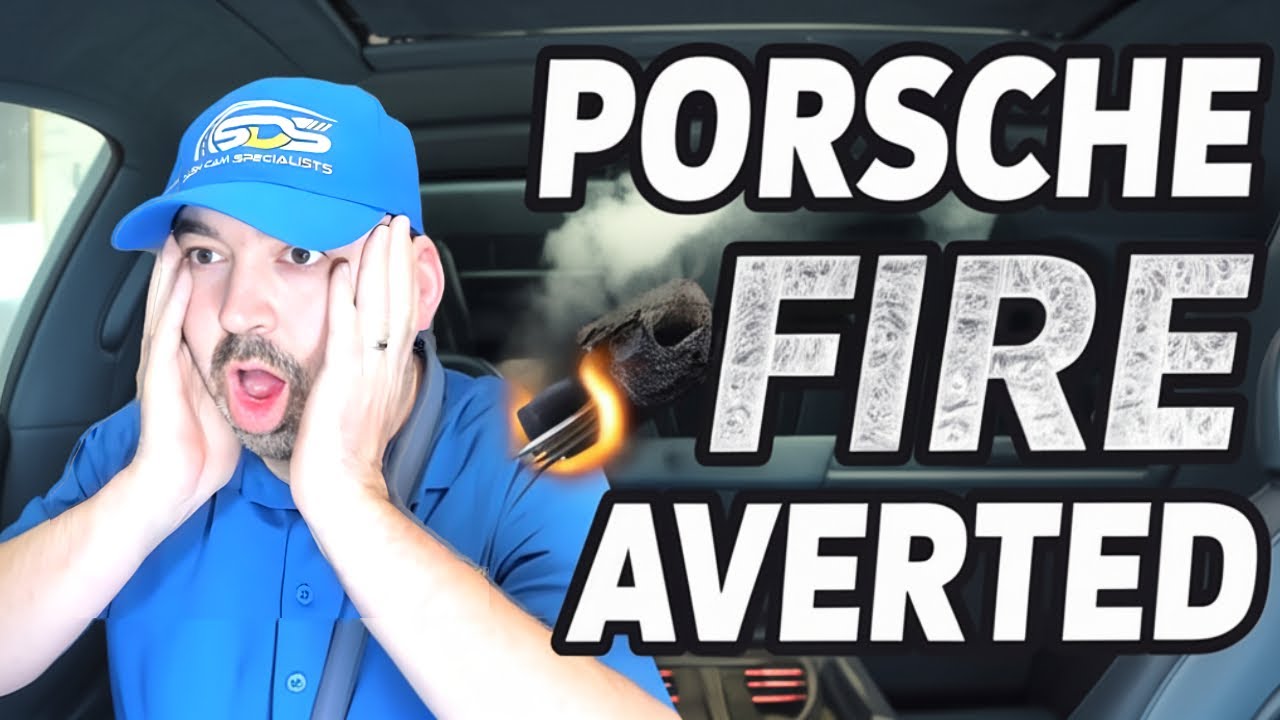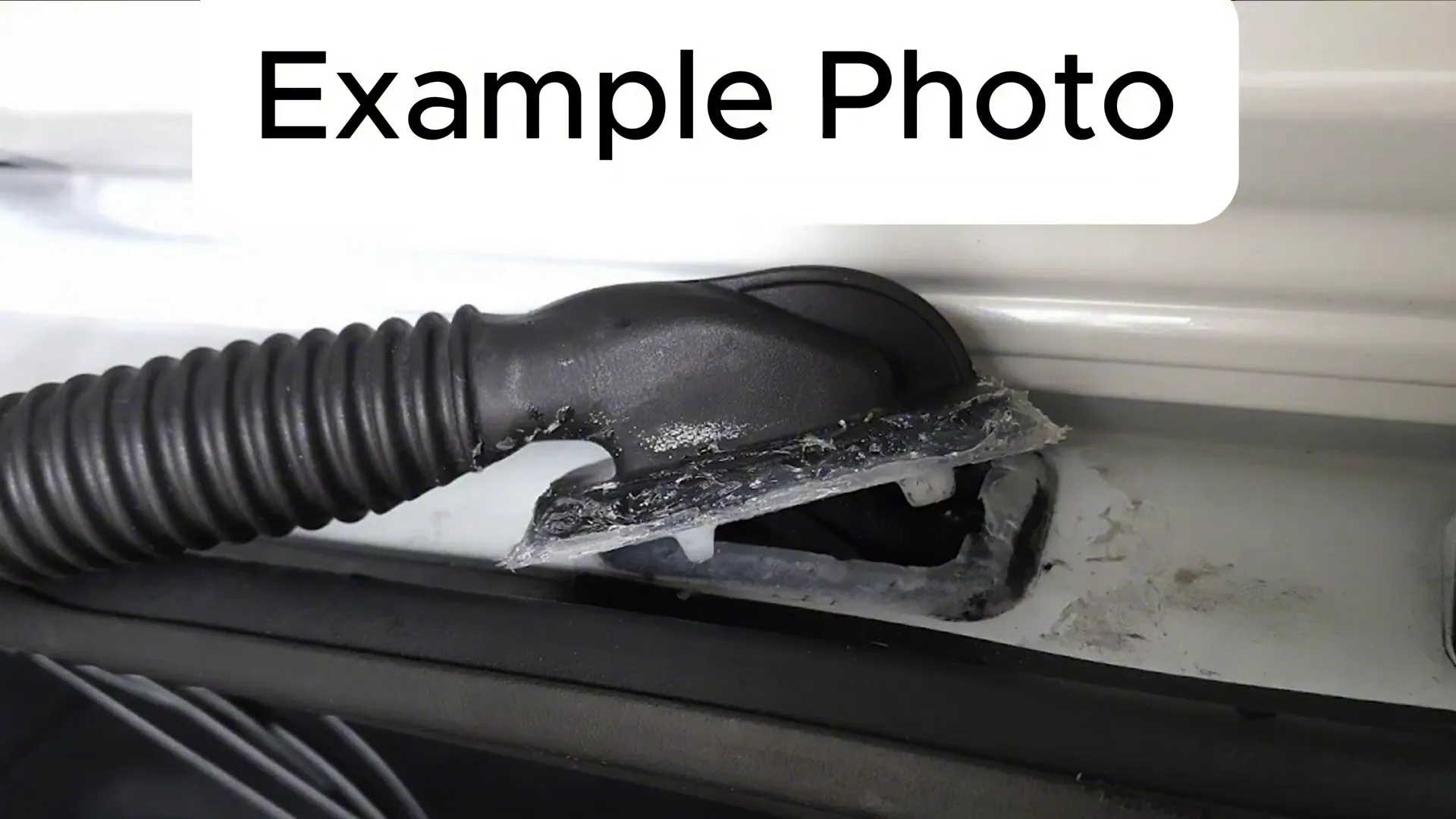I Fixed a $500 "Pro" Install on a Porsche Before It Caused a Fire

Introduction — why this matters
I'm Ben from Safe Drive Solutions. I make dash cam installation videos and I help drivers get reliable, safe video evidence on the road. Recently I fixed two installs — a Range Rover and a Porsche Cayenne — that looked fine from the outside but had dangerous mistakes hidden behind the panels. This post walks through what I found, why it’s a hazard, and what you should look for when getting a dash cam professionally installed.
What I see too often: pretty on the outside, dangerous underneath
Most customers judge an installation by how clean it looks from the cabin. That’s understandable — but it’s only half the story. A tidy dash and a hidden wire routed over an airbag or tied to the wrong power source can create a real safety issue, including a fire risk.
Key examples I found
- Wires routed over airbags (can obstruct deployment).
- Grommets and rubber boots cut or broken, destroying watertight seals.
- Dash cameras wired to constant power with no low-battery protection, causing drained batteries.
- Relay and fuse mis-sizing that can overheat and melt parts — a fire hazard.

Case 1: Range Rover — beautiful finish, sloppy execution
I was hired to upgrade a customer’s Range Rover dash cam. From the cabin it looked impressive — nice tie-wraps, tech-flex sleeving, tidy clips. I was honestly jealous at first. But when I removed the A-pillar the reality showed itself.
The installer had tied the dash cam wiring to the factory harness, which sounds good — except the rear camera cable was routed directly over the side airbag. That means if an airbag deploys, that cable is in the way and could act as an obstruction or be severed in a crash.

Down at the hatch it got worse: the installer broke the tabs on the hatch grommet and actually cut a hole in the rubber boot instead of routing the cable through the factory opening. The result is a wrecked grommet and a lost watertight seal. The customer said it hadn’t leaked in two years and didn’t want repairs, so I didn’t have a viable way to re-route properly without replacing parts.
Case 2: Porsche Cayenne — battery-draining camera and a possible melted relay
A good customer asked me to remove a recently installed BlackVue DR750X LTE from his brand-new Porsche Cayenne. The dash cam had been installed by a detail shop and the radar detector by the Porsche dealer. From the outside the dash cam install looked fine — but the wiring was wired dangerously.
Wrong power hookup — constant power with no protection
The shop wired the BlackVue to constant power. Older BlackVue installs used the Power Magic Pro adapter to safely manage parking mode and low-battery protection; that product was discontinued over two years ago. Instead of using a correct three-wire ignition/ground/power arrangement (or a proper battery management device), the installer cut the adapter ends and hooked constant power and ground directly.
That means the camera never sleeps and there was no low-battery protection — a guaranteed way to fully drain a vehicle battery over time.
Wires routed over airbags again
In the Porsche the rear camera cable and the power cable were run over the airbag, the same unsafe routing I keep finding in other cars. Tidy from the cabin, unsafe behind the trim.
The worst: dealer-installed radar detector wiring that could catch fire
The dealer’s radar detector wiring was the most alarming find. They used a 30 amp relay to switch power for the radar detector, but tied that relay into a 150 amp circuit at the battery — and left the relay permanently latched to constant power with no ignition trigger and effectively no proper fuse protection for the relay circuit.
To be clear: a 30 amp rated relay protected by a 150 amp fuse feeding constant power to a device that draws less than 2 amps. When we removed that relay it was so hot I handed it to the customer to show him how dangerous it had become. That mismatch — oversized fuse for a small circuit, no ignition control, no local fuse protection for the device/relay — is exactly how fires start and components melt.
Why these mistakes happen
Some reasons I see repeatedly:
- Installers prioritize a clean visible result and skip proper routing behind panels.
- Shops reuse old stock or cheap adapters and fail to account for discontinued products like the Power Magic Pro.
- Dealership or detail shops sometimes take shortcuts to save time or cost — but those shortcuts create safety issues.
- Customers don't always want to fight the shop or dealer to have things corrected — so the unsafe work remains. Or they go elsewhere to get it fixed.
How we do it (and what you should expect)
At Safe Drive Solutions we try to be consistent and transparent. When you book an install with us you can:
- Watch us work (we don’t hide our process).
- Expect proper routing away from airbags and moving parts.
- Expect correct power hookups: three-wire harnesses or proper parking-mode devices with low-battery protection, and ignition triggers where appropriate.
- Expect correctly sized fuses and relays — local protection for the circuit, and no oversized battery-level fuse protecting small circuits.
- Expect us to own and repair any accidental damage.
Checklist: What to look for after a professional dash cam install
- Ask to see under the A-pillar or have the installer show the wiring path. Ensure no wires are routed over airbags.
- Confirm how the camera is powered: ignition-switched vs constant power, and whether low-battery protection is present.
- Check grommets, rubber boots, and hatch seals for cuts or broken tabs — these must remain watertight.
- Ask about fuses and relays used and where they’re installed. A properly fused branch is essential.
- If anything is already broken from a previous install, understand that repairing properly may require new parts and added cost.
Conclusion — what to pay for (literally and figuratively)
Price alone doesn’t guarantee a safe installation. I’ve seen shops charge $1,000 or more and still install things in ways that create fire hazards or risk airbags. Conversely, we show our process and stand behind our work. If you can, watch the install. If you can’t be there, ask for photos of the routing behind panels and proof of proper fusing and battery-management devices.
Think beyond how an install looks in the cabin. Ask the right questions. A tidy-looking job that’s wired incorrectly can be far more expensive and dangerous in the long run than a slightly less polished but properly executed installation.
Drive safe.


